
IRISH IMBAS PROJECTS IN PRODUCTION


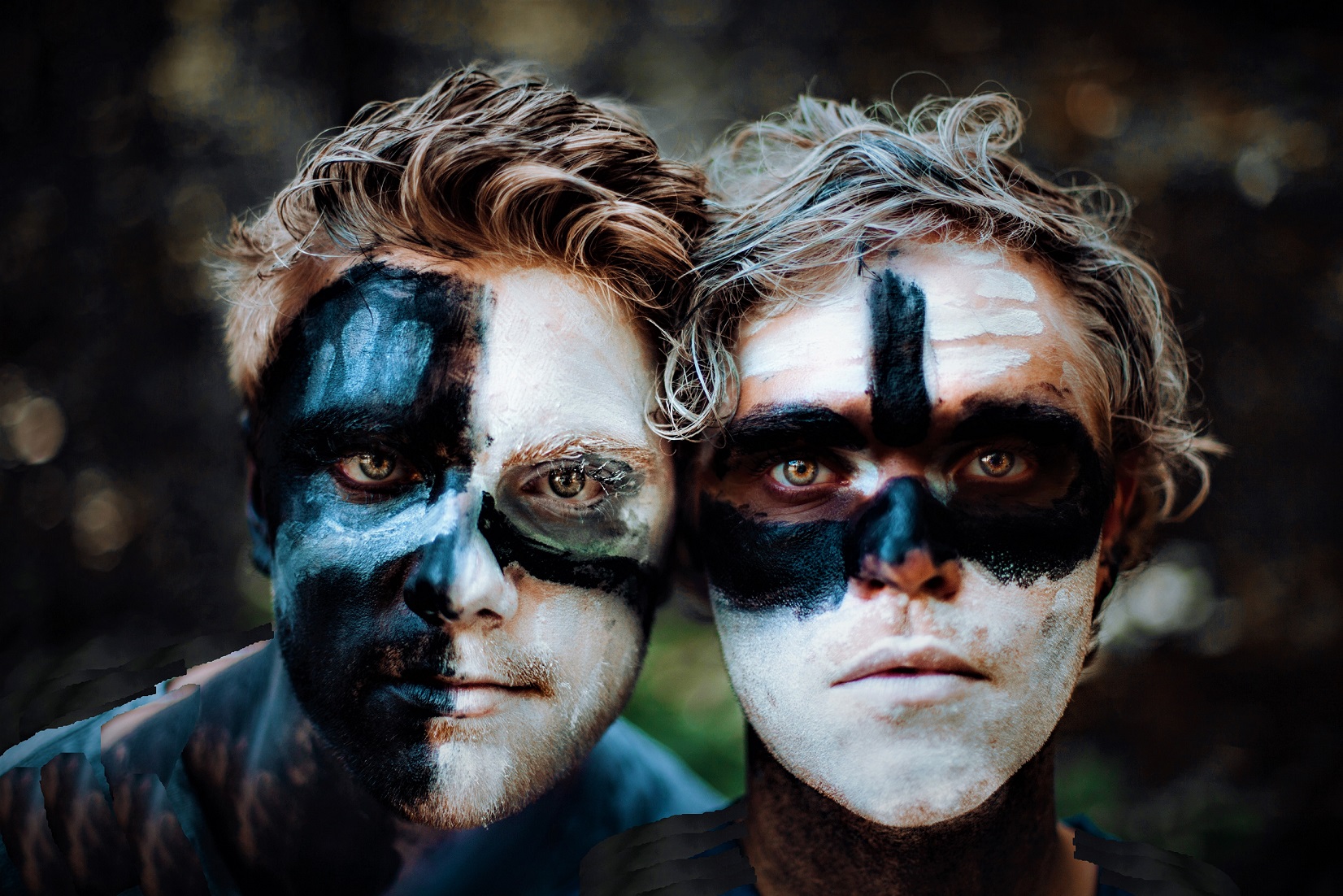
Wherever there are human beings in large numbers, you’ll find microbes and epidemics and although Ireland wasn’t vastly populated in the Pre-Christian era, its people were still familiar with the concept of disease and its spread. Centuries later, medieval writers tended to use the word ‘plague’ when describing early epidemics but, in fact, the term ‘plague’ is very much associated with infectious diseases caused by a specific bacterium (Yersinis pestis).
In ancient Ireland, the individual most often associated with epidemics is Parthalán, a character invented as part of medieval Irish Christian pseudo-history (the term used for false “history” made up by the early Christian church to justify and further their aspirations for power and influence). Parthalán is believed to be an Irish-branded version of Bartholomaeus (better known as Bartholomew in the bible).
According to the very untrustworthy 11th century Christian pseudo-history manuscript Lebor Gabála Érenn (The Book of Invasions of Ireland), Partholón and his people arrived on the uninhabited island of Ireland three hundred years or so after the flood involving Noah’s Ark. Settling in the one unforested section of the country – Sean Mhagh nEalta – near Dublin, they lived there for thirty years, by which time the population grew to 9000 (nicely rounded to ‘five thousand men and four thousand women’, by the early authors).
Sadly, according to Lebor Gabála Érenn, they all succumbed to plague over the course of a single week at modern-day Tallaght. Interestingly, the name Tallaght is believed to be derived from tamlacht (which means “a grave, set apart”) and the location has a large cemetery dating back to the bronze age.
One variant of the tale (in the Annála na gCeithre Máistrí) has the seer, Tuan, as the single survivor.
The Christian church in Ireland (and elsewhere) often used epidemics – or the threat of epidemics – as a mechanism to draw new religious recruits into their folds. Epidemics were proactively described in metaphorical terms such as ‘beasts’ or ‘punishments’, with the underlying implication they were sent by destructive forces against which only God – their God – could protect them. Two of the most famous early Irish epidemics (said to have occurred in the six or seventh century) were the Crom Chonaill and the Buidhe Chonaill, the name ‘Chonaill’ suggesting they spread south from Tír Chonaill in the north of Ireland (in ancient Ireland, the idea that evil spread from the north was a relatively common motif). Needless to say, many of the Christian manuscripts on the lives of the Saints from that period have them banishing yellow fever without any problems.
Although you have to take all the early literary and “historical” accounts of Irish epidemics with a large grain of salt, the one common pattern that shines through is how people or entities seeking power or influence will often use such events to forward their own interests. That’s probably something we shouldn’t forget.
Stay safe and well and sending you our warm regards for the difficult days ahead.
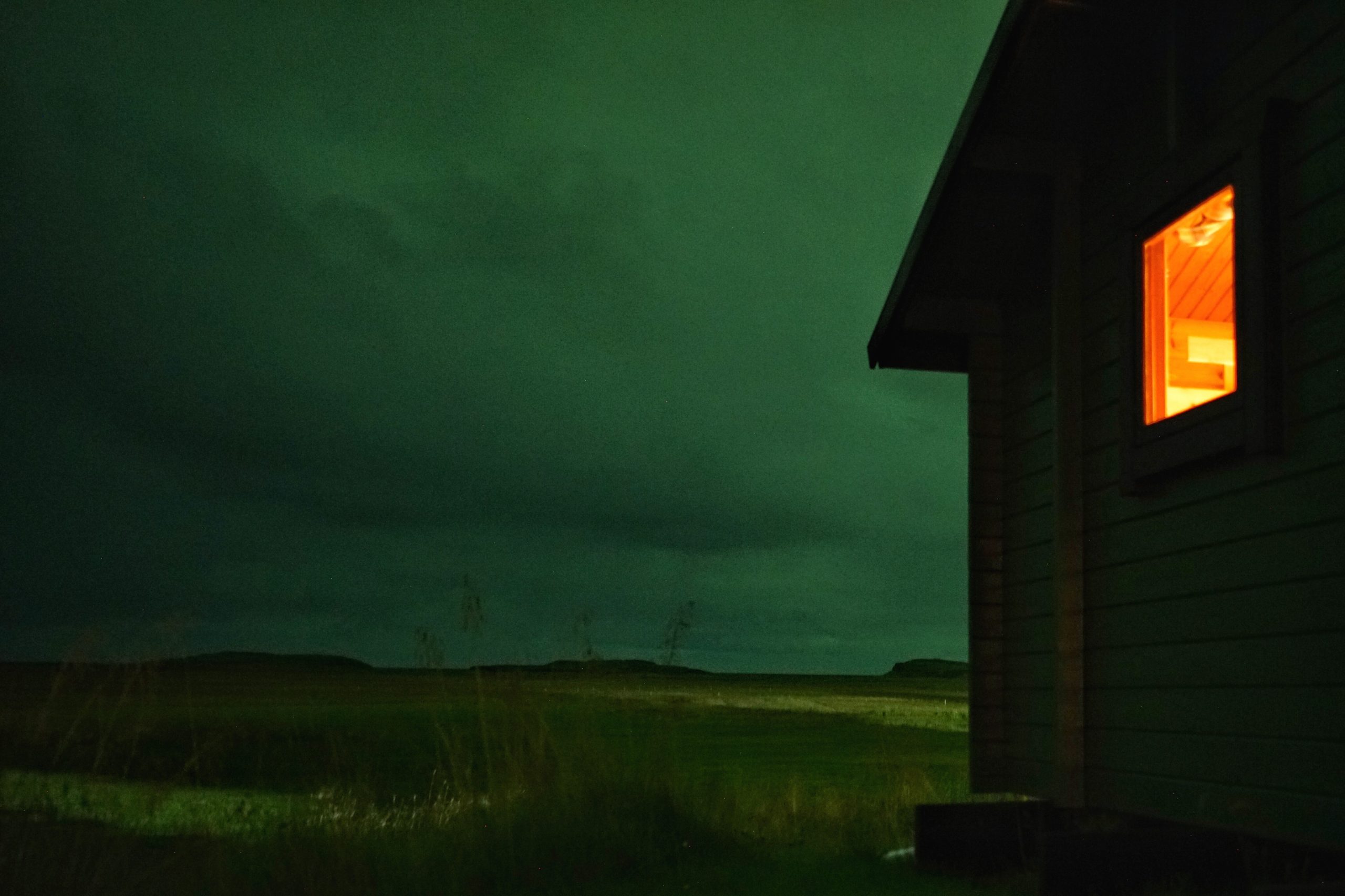
This is an except from the first book I ever published, a kind of Irish De Vinci Code involving an Irish mythological detective (we used to jokingly call it the O’Vinci Code!).
It’s the first in a trilogy (although they’re all standalones) and I have yet to complete the second (not to mind the third) as I’ve been so full-on with the other series I’m writing.
What you need to know:
Following the strange death of his brother, retiree Diarmuid O’Suilleabhain (O’Sullivan) has adopted his nephew Demne, a strange child who was raised in Irish and who has numerous struggles with authority. After beating the child in school for speaking only in Irish, the brutal teacher An Máistir (The Master) is involved in a serious accident and has to leave the profession. Diarmuid is pleased with An Máistir’s replacement, but it turns out Demne’s issues with the 1960’s Irish schooling system are only just beginning.
The Excerpt: Mad Priests and Flying Stones
Within the fortnight, a woman by the name of Miss Kelly was appointed to replace An Máistir and take over the school’s teaching duties. A strict but fair woman, it was generally felt within the community that she was a significant improvement on her predecessor. Of greater importance to Diarmuid was the fact that she was a gaelgoir from the Corca Dhuibhne Gaeltacht and took an immediate shine to the young boy who spoke the language so fluently.
When the school reopened, Diarmuid was much more relaxed about releasing his nephew back into its care. Demne’s new teacher was kind and supportive and the language barrier was no longer a problem. The full potential of a national education, it appeared, now lay out before him.
Within a week, Diarmuid discovered that his confidence in the national education system had been naively premature. Returning from the fields on a Thursday afternoon, he was astounded to find his nephew sitting stiffly at Carraig Dubh in the company of a red-faced Father Byrne. The old man’s initial reaction was one of heartfelt panic. Father Byrne, he knew, was first cousin to An Máistir and must somehow have discovered Demne’s involvement in his recent hospitalisation.
Before Diarmuid had a chance to leap to his nephew’s defence, however, the parish priest leapt to his feet and released a torrent of accusations that were as perplexing as they were vitriolic. Because Father Byrne was practically frothing at the mouth, it took some time to work out what he was complaining about. Slowly it became clear – to Diarmuid’s immense relief – that the ecclesiastical outrage was not related to the assault on An Máistir but to the less immediate threat of his nephew’s eternal soul.
Completing his visit with a warning of severe consequences should the issue not be addressed to his satisfaction, Father Byrne wrapped himself in a cloak of religious self-righteousness and stormed from the house.
‘Safe home now, Father!’ Diarmuid called in his wake, although he could not resist throwing a two-fingered salute at the back of the departing cleric.
Despite the cold, Diarmuid remained outside and smoked a cigarette as he attempted to work through the ramifications of what he had just been told. He was shivering by the time he returned inside but, realising that there was no time like the present, he drew up a stool next to the boy and looked him directly in the eye.
‘So, let me get this straight,’ he said. ‘You don’t know who God is.’
There was a brief silence.
‘I know the one hanging up on the cross in the church,’ the boy admitted. ‘And Miss Kelly and Father Byrne were telling me about three other ones, but …’ He paused. From his demeanour, Demne seemed unsure as to whether someone was winding him up or not.
‘Did yer Da never bring you to …’
Diarmuid stopped abruptly. He had been about to ask whether Demne’s father had never taken him to church. On reflection, the answer to that particular question was patently obvious.
‘Did yer Da ever tell you about God and Jesus and all that?’ he tried instead.
The boy shook his head.
‘A Dhia na bheart!’ the old farmer exclaimed, throwing his hands in the air. Taking a deep breath, he calmed himself and started again. ‘You have to listen to what the priest tells you about the religious stuff, a bhuachaill. You have to do what he says and toe the line.’
Demne’s lips tightened and his uncle repressed a twinge of frustration. Evidently the boy had inherited the family’s gene for stubbornness: the determined expression on Demne’s face was identical to the one he remembered on his brother’s face as a child.
‘But Father Byrne says mad things, a Uncail.’
‘Sure he does, but he’s a man with influence in the community. He’s also the Church’s local representative and that’s a crowd you don’t want to mess with. They’ve a lot of power since the Long Fella did a deal with them and they don’t like the faithful getting ideas above their station. If you come to their attention they won’t leave off until they’ve made you submit to their view of the world, one way or the other.’
‘But it’s not true! That’s wrong.’
Diarmuid regarded his nephew with surprise. Clearly, he was going to have his work cut out trying to educate him in the fine tradition of moral hypocrisy.
‘It doesn’t matter if it’s true or not. It’s not about right or wrong, it’s about survival. The Church love going around telling people how they should live their lives. If you want to stay out of trouble you’ve got to put up with that. That’s why we go to Mass on Sundays. It’s not that I believe some big God fella’s going to smack me across the arse with a bolt of lightning, it’s because it keeps the clergy off our backs. If going out there, bending your head at the right time and mumbling some oul shite is enough to keep them quiet then we’re all happy.’
The boy did not seem convinced.
‘Demne, people get upset when others don’t agree with them or don’t believe in the same things they do. If you want to be part of a community you have to blend in. If you’re too different or you stick out, you’ll eventually end up turning them against you. Everyone around here goes to Mass or believes in God – or at least they say they do – so you have to follow suit. Stirring the priests up will only make life more difficult.’
‘Do you like priests?’
Diarmuid stared at him with genuine astonishment.
‘Whatever gave you that idea?’
‘You like Father McCarthy.’
‘That’s different. He’s not really a priest. He just thinks he is.’
‘Maybe I should throw a stone at Father Byrne.’
‘No, you can’t throw a feckin’ stone at Father Byrne!’
‘You didn’t mind me throwing a stone at An Máistir.’
‘Only because you’d already gone and done it. You can’t go around lobbing rocks at people in authority. You …’ he hesitated momentarily. ‘Well, actually, you can, but you wouldn’t be long getting caught.’
‘I’d be clever, a Uncail. They wouldn’t get me.’
‘You’d have to be very feckin’ clever not to get caught eventually, Demne. No, if you go up against the big boys you’ve got to be able to pick your battles. More importantly, you have to pick your defeats – the way that you can choose the fights you want to win.’
It took another half-hour of intense argument before he finally convinced his nephew to adhere to the priest’s teachings – or, more accurately, to pretend to go along with them, keep his head down and get on with his work in school.
This reluctant concession appeared to achieve its objective, however. Within a few weeks, Demne’s troubles at school ceased. To his uncle’s surprise and immense satisfaction, Demne revealed himself to be an adept and natural scholar – although it still irked him that this had only been revealed through the use of English.
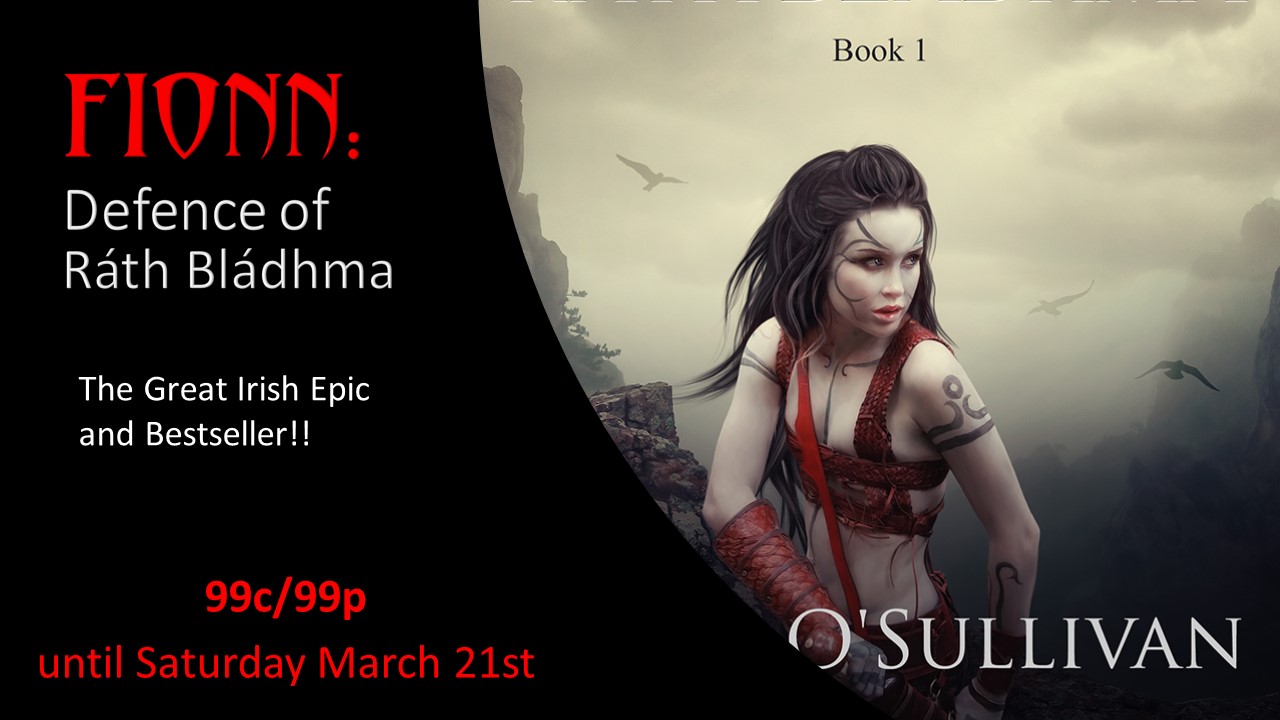
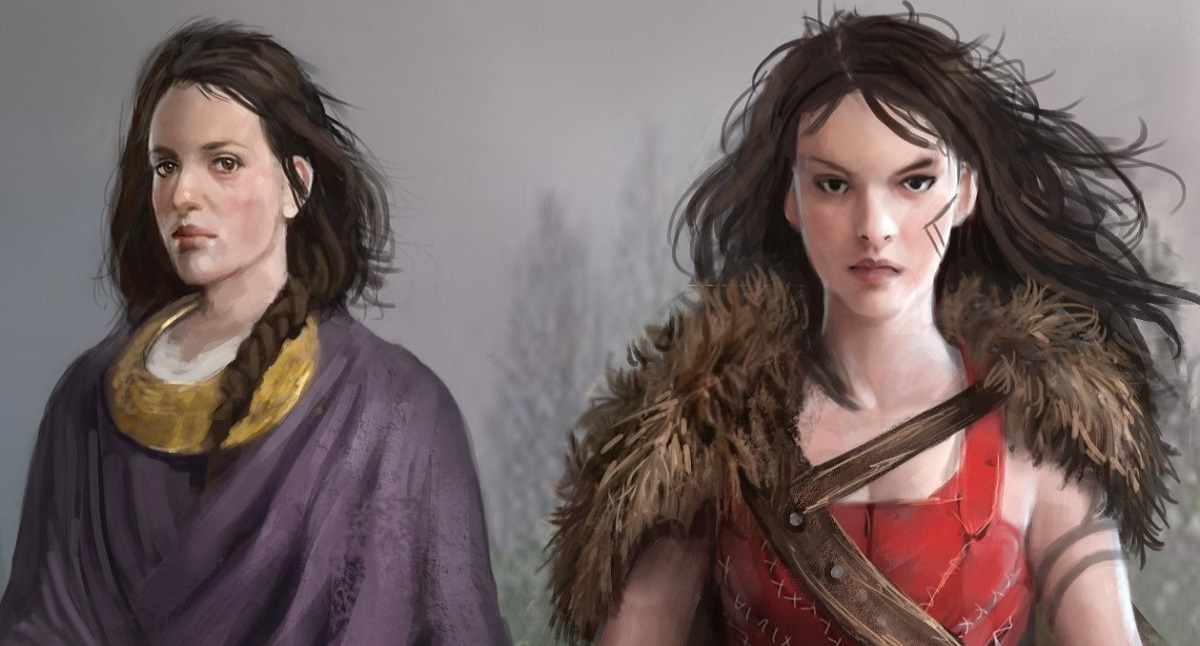
DRESSING LIATH LUACHRA
This is a silly little video I threw together during a moment of whimsy while doing my monthly newsletter.
When the updated cover for Fionn 2 (FIONN: Traitor of Dún Baoiscne) was being developed, the artist put together a series of cover versions for the different clothing options he’d come up with for Liath Luachra. I happened to come across the files again last week and, as I was flicking through them, I found it had an amusing ‘film’ effect.
Anyway, judge for yourself but prepare to be underwhelmed. For some reason, the transfer to You Tube seriously diminished the quality of the images and, deep and meaningful, this is not.

A gorgeous image from artist Bryan Mahy for the “Dark Dawn/ Camhaoir Fuilsmeartha Project” I’m currently working on.
This was intended to be released this month but delays outside my control mean it probably won’t be available for a little longer.
Subject-wise, this is a story about a dying warrior defending the isolated settlement of Ráth Bládhma, future home of Fionn mac Cumhaill. It’s a stand-alone, once-off, spin-off from the Fionn mac Cumhaill Series and people will either love it or hate it.
It will have its own page soon but for the moment the best source of information is probably here:

Over the last year or two, I started investigating various Facebook Groups on Irish Mythology to get some kind of sense of what people were looking for – or what they even understood – when it comes to Irish Mythology (or any mythology for that matter). During that process, I plonked a few of my own articles in there to see the kind of reaction that garnered but mostly I just sat and watched the information being presented and the various responses to it.
My overall process was very passive but it soon became clear that Facebook Groups had some serious limitations and that, despite their popularity, they sure as hell aren’t a good mechanism to learn anything meaningful or authentic (particularly on Irish Mythology). I’m currently exiting most of the groups I joined but, below, I’ve outlined some of the issues I’ve noticed. This is a very early summary and there’s a whole bunch of material I haven’t yet analysed but I don’t want to bore the crap out of you on a nerdy topic that probably only interests me.
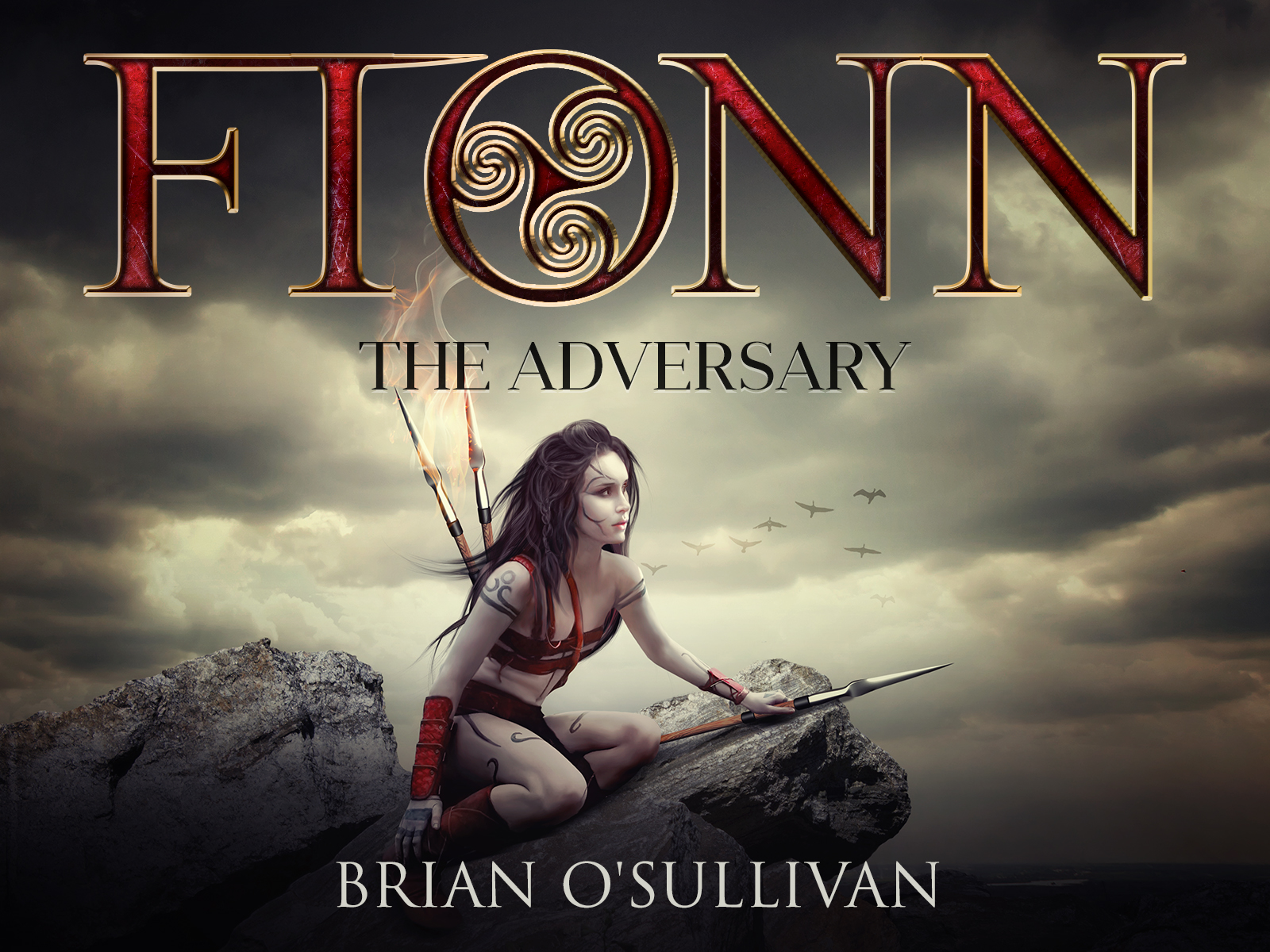
It’s hard to believe that it’s almost four years since I published FIONN 3: THE ADVERSARY – the book that completed the first three-book arc of the Fionn mac Cumhaill Series.
The above image is an alternative cover for that book (developed from a series that the artist went off and created predominantly to satisfy her own creative urgings). An incredibly talented cover designer, she had the whole fantasy genre down to a tee and, hence, thought I’d love what she sent me. And I did – anything this artist does is amazing!
Unfortunately, by then, I’d also been feeling increasingly uncomfortable with having my work locked into the ‘fantasy’ genre, predominantly due to my growing understanding around the confusion between genuine mythology and ‘fantasy’ (particularly where it relates to anything Irish). The over-sexualised imagery that tends to accompany the fantasy genre was also wrong for the kind of books I produce.
In the end, we used a different variant for the cover (using the original photostock – you can see the final here) but I ended up paying the artist for the additional set of images as well. She’d done some amazing work for me in the past and, frankly, she deserved it. Although I’ll probably never use any them, its nice to pull them out on occasion and appreciate the great skill she put into them
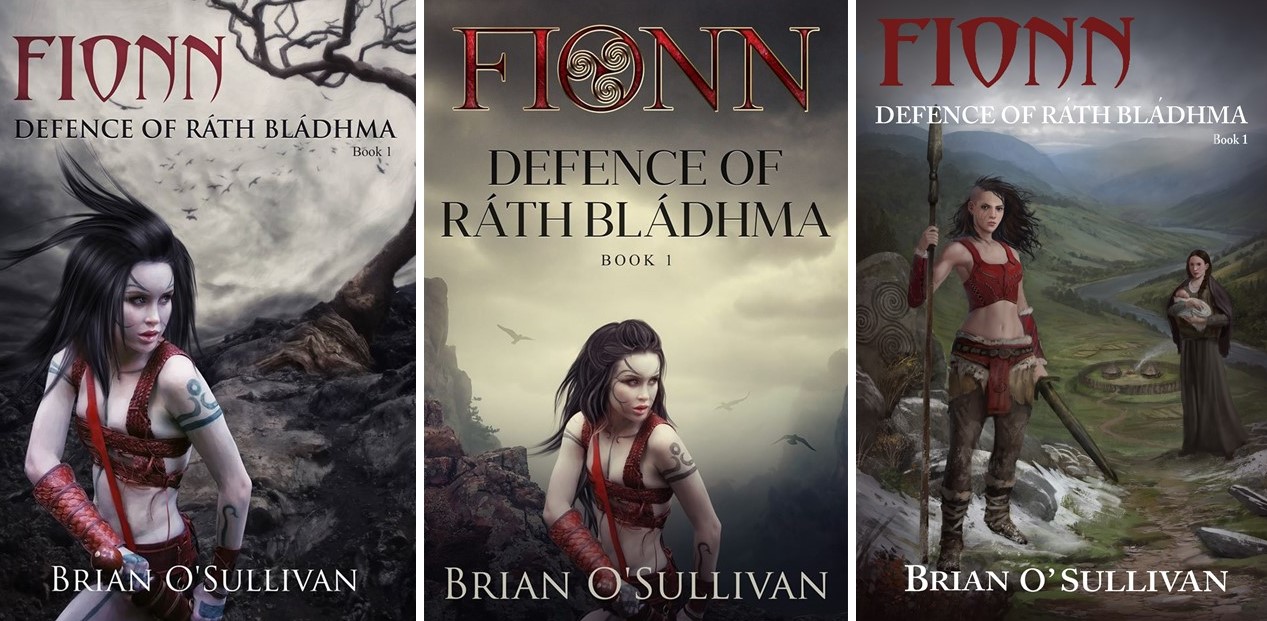
I received one of those social media reminders today that it’s been six years since I first published FIONN: Defence of Ráth Bládhma, an anniversary that’s triggered some quiet reflection for me.
FIONN 1 was actually the second book I ever published (Beara: Dark Legends being the first). It was my first attempt at producing a genuine (as culturally authentic as I could make it) Irish historical adventure/fantasy novel and, to be honest, I had no idea whether people would like it. I’d never written anything similar before and given my insistence on using Irish cultural concepts and – occasionally – language, I assumed most people would be scared off.
Six years later there are four (by December) books in the series as well as a spin-off series (The Irish Woman Warrior Series) which will have three books by the end of the year. It still amazes me that people buy them, even more so when they leave positive reviews.
When I finish a book, it goes from my head and even a few months I struggle to remember even writing it. I reread this book about two years ago and it was a slightly bizarre experience in that it was actually just like reading a book someone else had written. The weirdest thing was that I really enjoyed it and, overall, I thought it was great (!!?). I’m not really sure what that says about me. People often say you can be your own worst critic but I clearly run the other way.
I’d like to say ‘thank you’ to all of you who took the time to read this book and a particular thanks to those of you who were kind enough to go so far as to write a review. For any writer that will always be a buzz, no matter how old the book or how many books they’ve written.
I’ve always had a clear idea in my head where this series was going (and the Liath Luachra Series of course) and although I’m keen to move onto other projects it feels good to be edging closer to the completion of the story, the characters, the twists and the plots I wanted to reveal. Given the growing interest in a television version, this could of course end up going on in a way or a direction I’d never even envisaged but, to be honest, there are a thousand other things I need/want to do.
I think some stories never end.
Note: The above image shows the development of the cover since my initial amateurish introduction. The current cover is the image seen below.

A snippet from Liath Lauchra 3: The Seeking
———————————-
Emerging from the cave, the warrior woman found Murchú already mounted and waiting below the yew trees. Swaddled against the cold in his black cloak, he had the lower hem drawn up and held in place beneath his inner thighs. The sight of the Uí Loinge man poised so casually astride the animal took Liath Luachra by surprise. Too dazed to take note when he’d first arrived, she’d assumed Murchú had managed to make it to Luachair on horseback only through a combination of good fortune and determination. The restful pose and the relaxed manner in which the reins dangled loosely from his fingers however, suggested he was a more than competent horseman.
She was even more surprised when he reached down with one hand to help her mount. Looking from the hand to Murchú, then back at the hand again, she firmly shook her head.
‘I’ll run.’
‘All the way to Briga?’ He adjusted the folds of his cloak. ‘That could cost us days. Days we don’t have, Grey One.’
The woman warrior frowned and regarded the horse with a measure of distrust. She didn’t know much about horses and had always viewed them with wary circumspection. They were beautiful creatures to look at and had their obvious uses but they were also skittish and could let you down when you needed them most.
And, of course, they were also rather high.
The Irish Woman Warrior Series
————————————-
[Image from the film, “Centurion”]

This is another of the images pulled from my regular weekend research of imagery – something about the mood in this image really drew me to Eve Ventrue’s ‘The Rider’ ( the image attached to this post).
I’m currently writing a chapter which involves the use of horses and was reminded of a question I occasionally get asked: Why don’t the characters in the Fionn mac Cumhaill and the Liath Luachra books ride horses?
There are several reasons for this but the most important is authenticity. Back in the 1st and 2nd century, Ireland was a very rugged land, full of dense forest, marshes and terrain that was extremely difficult to traverse. People didn’t tend to travel very far unless they had to and, a lot of the time, the journeys they took were simply too onerous for horses (because of the huge amount of clambering required).
We also have to remember that horses weren’t all that plentiful. For those communities fortunate enough to have a horse, the animals were mostly kept for critical farm work and if they were ridden, they would only have been ridden by the most important members of the tuath (tribe).
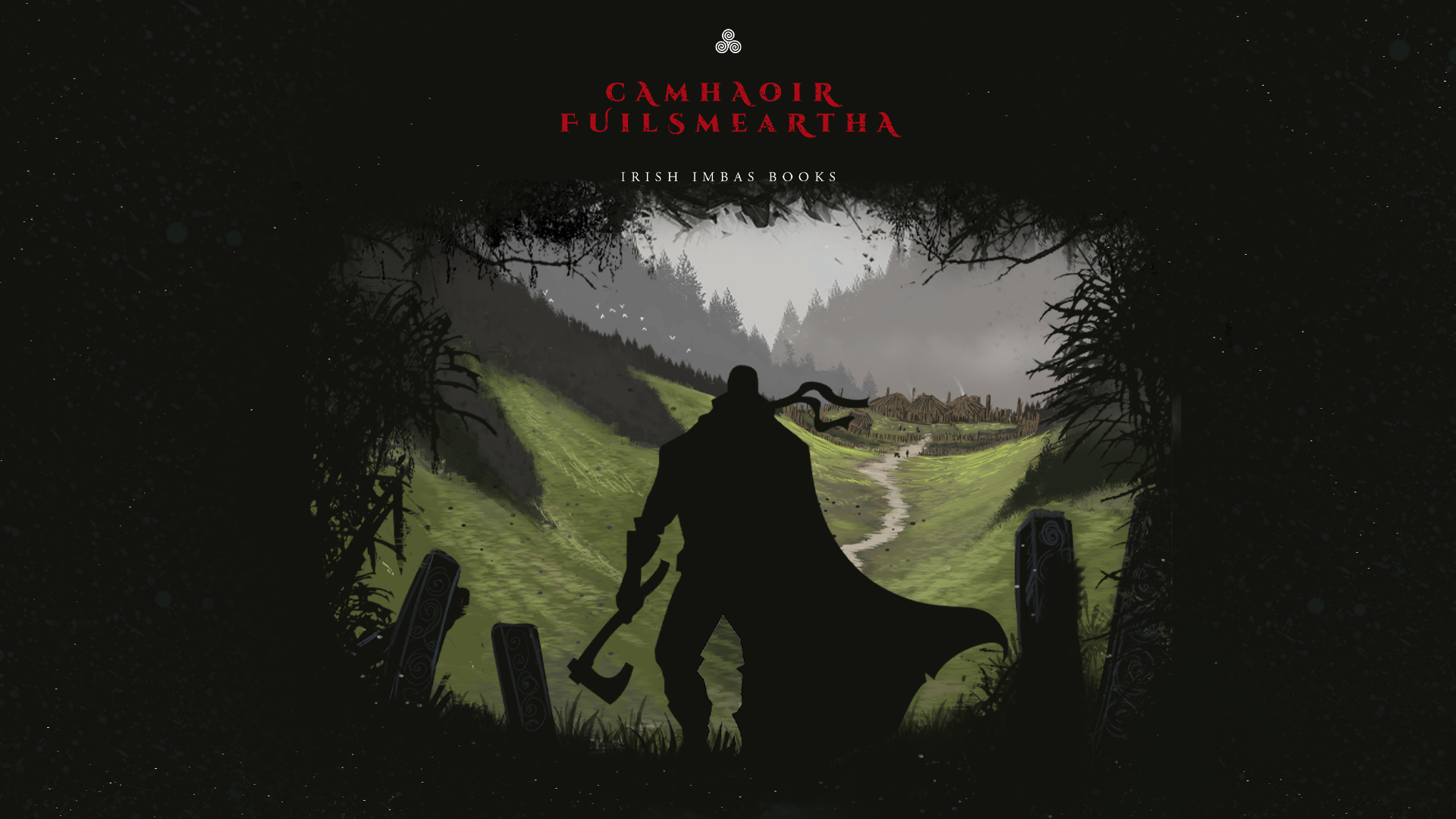
The title in the image above – Camhaoir Fuilsmeartha – is the Irish title for a free, online, bilingual adventure fiction project released in January 2020. The English title – Dark Dawn – is one you may have come across elsewhere (it’s a bilingual Irish/English project).
As with all languages, translation often doesn’t work the way you’d expect and Irish is no exception. As a literal translation, ‘Dark Dawn’ just doesn’t work particularly well in Irish. That’s probably because it doesn’t have the same cultural connotation in English (at least, not in my head). Rather than resorting to béarlachas (the word we use where an Irish language or cultural concept is forced into an English structural form or word pattern), I’ve therefore used a different translation instead.
Literally, ‘Camhaoir Fuilsmeartha’ means ‘Bloodspattered Dawn’. The meaning is slightly different from the English title but, more importantly, the connotation is correct, from a cultural perspective it’s far more apt and it still captures the theme of the story (a dark, action-adventure tale set in the Fenian Cycle).
Because I work in Irish mythology, a lot of my books tend to end up in the ‘Fantasy’ genre where I see a lot of writers (particularly, the Celtic Fantasy genre authors) use Irish terms to try and give their books a bit of (cough!) ‘cultural integrity’. The main problem I come across is where such authors use Google Translate for various terms in their books and the results are often disastrously hilarious. At it’s best, this tool is really a kind of ‘béarlachas machine’: with Irish, it translates everything literally and therefore gets at least 80% of it’s translations technically correct but culturally and socially wrong.
At its worst, you could say that Google Translate is like a global colonisation tool where any foreign concept from a different language/culture is sanitized to a ‘nice’, English-comprehensible equivalent.
Even where the original concept is left behind and rendered meaningless.
———————-
Note:
‘Camhaoir Fuilsmeartha’/ ‘Dark Dawn’ remains FREE online. You can find it here: IRISH ADVENTURE